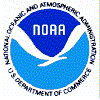 ®
® ®
®Several pollutants attack the ozone layer. Chief among them is the class of chemicals known as chlorofluorocarbons (CFCs), formerly used as refrigerants (notably in air conditioners), as agents in several manufacturing processes, and as propellants in spray cans. CFC molecules are virtually indestructible until they reach the stratosphere. Here, intense ultraviolet radiation breaks the CFC molecules apart, releasing the chlorine atoms they contain. These chlorine atoms begin reacting with ozone, breaking it down into ordinary oxygen molecules that do not absorb UV-B. The chlorine acts as a catalyst(that is- it takes part in several chemical reactions) yet at the end emerges unchanged and able to react again. A single chlorine atom can destroy up to 100,000 ozone molecules in the stratosphere. Other pollutants, including nitrous oxide from fertilizers and the pesticide methyl bromide, also attack atmospheric ozone.
Scientists are finding that under this assault the protective ozone layer in the stratosphere is thinning. In the Antarctic region, it vanishes almost entirely for a few weeks every year. Although CFC use has been greatly reduced in recent years and will soon be prohibited worldwide, CFC molecules already released into the lower atmosphere will be making their way to the stratosphere for decades, and further ozone loss is expected. As a result, experts anticipate an increase in skin cancers, more cataracts (clouding of the lens of the eye), and reduced yields of some food crops.